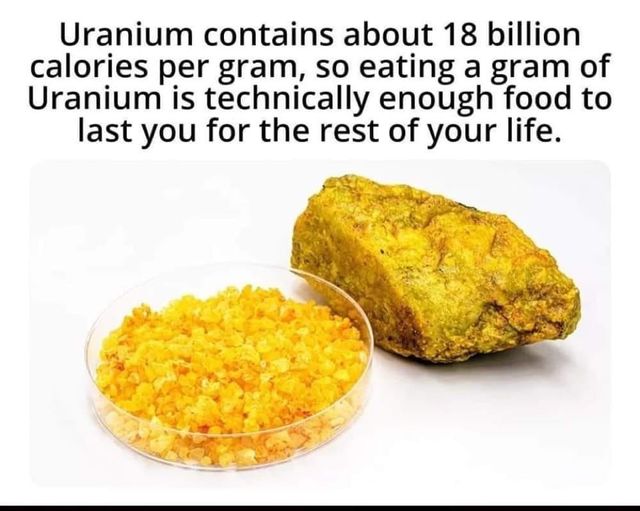this post was submitted on 03 Apr 2024
684 points (98.0% liked)
Science Memes
10271 readers
2545 users here now
Welcome to c/science_memes @ Mander.xyz!
A place for majestic STEMLORD peacocking, as well as memes about the realities of working in a lab.

Rules
- Don't throw mud. Behave like an intellectual and remember the human.
- Keep it rooted (on topic).
- No spam.
- Infographics welcome, get schooled.
Research Committee
Other Mander Communities
Science and Research
Biology and Life Sciences
- [email protected]
- [email protected]
- [email protected]
- [email protected]
- [email protected]
- [email protected]
- [email protected]
- [email protected]
- [email protected]
- [email protected]
- [email protected]
- [email protected]
- [email protected]
- [email protected]
- [email protected]
- [email protected]
- [email protected]
- [email protected]
- [email protected]
- [email protected]
- [email protected]
- [email protected]
- [email protected]
- [email protected]
- !reptiles and [email protected]
Physical Sciences
- [email protected]
- [email protected]
- [email protected]
- [email protected]
- [email protected]
- [email protected]
- [email protected]
- [email protected]
- [email protected]
Humanities and Social Sciences
Practical and Applied Sciences
- !exercise-and [email protected]
- [email protected]
- !self [email protected]
- [email protected]
- [email protected]
- [email protected]
Memes
Miscellaneous
founded 2 years ago
MODERATORS
you are viewing a single comment's thread
view the rest of the comments
view the rest of the comments

http://www.jaygarmon.net/2010/09/according-to-einsteins-famous-equation.html?m=1
Apparently 21.5 billion calories per gram of matter
Not sure what this meme is getting at, then, since it seems to be significantly undercounting it
Meme is referring to nuclear reactors, not complete antimatter annihilation.
Nuclear reactors don't "burn" everything
most of the matter stays (this is what nuclear waste is). So you can only apply E=mc^2 to the difference in mass, not the mass of the fuel.
You know it's funny, technically a calorie is just a measure of how much energy it takes to heat up 1 gram of water 1° C I never really thought about it but it could totally be applied to other things and nuclear reactor plants that literally just heat up water to spin a turbine would be the perfect thing to measure in calories. So would regular electric plants for that matter. It might just be literally calories.
Oh shoot that would be some wild math to figure out how hungry they all are.
Except that 1 gram of water is at 1 bar. Heating up 1 gram of water from 300°C to 301°C takes 1.38 calories.
Can they really get out THAT many calories from a gram of Uranium?! That's insane!
I wish I cared more and would verify it
Calories are just a measure of the energy released by a material.
Normally they're measured by burning the material, so it's not really accurate to say that you can get that many calories from uranium. On the other hand the whole concept is fucking stupid anyway, because it's measured by burning the material. Technically, a kilo of dry sawdust has 4800 calories (more than double the daily calorie requirement of the average person).
I just googled around and I think the meme inflated the numbers. Fast neutron reactor gets 28GJ/g, which is "only" about 7 million food (kilo) calories.
The numbers don't add up. If you can get 21 billion US food calories from total annihilation (which I checked is right), you'd get nowhere near 18 billion food calories from a fusion reaction. Maybe it works if you assume "calories" for the fission reaction means metric calories, since US food calories are metric kilocalories.
I hate the way the word "calorie" ended up with two wildly different definitions.
Yeah, I looked up energy density assuming fast neutron reactor, and it's "only" 7 million US food calories.
US calories are equal to the real metric unit of kilocalories. Maybe the meme above used real calories
I also think it’s an interesting choice to use uranium. Wouldn’t osmium be a better choice due to its increased density?
I think more people know what uranium is. I, for one, had never heard of osmium until right now. Jokes are funnier if you don't have to explain them.
Picking a higher density of the material just means the one gram would occupy less volume, it doesn't affect how much energy that gram is equivalent to in terms of E=mc2. For that calculation, as the equation implies, only the mass matters; a gram of feathers is equivalent to the same amount of energy as a gram of lead for that equation. Now, this equation is in fact a simplified assumption; if you launch your feather at relativistic speed, then we're talking
This is true. This is why I compared them using the fixed volume of one cubic centimeter rather than using something like specific gravity. The only thing that differs is the mass, which is of course, directly proportional to the energy.
How much more matter is in a gram of osmium than in a gram of uranium?
Given that mass behaves the same regardless of what is providing that mass in a gravity field, I imagine it simply the ratio of the weights. I’m assuming NewtonIan physics here.
Osmium is 22.59 g/cm3.
Uranium is 19.1 g/cm3
I would therefore expect about 10% more energy if it was made of osmium, simply equating mass and energy here with the famous crazy-haired guy equation.